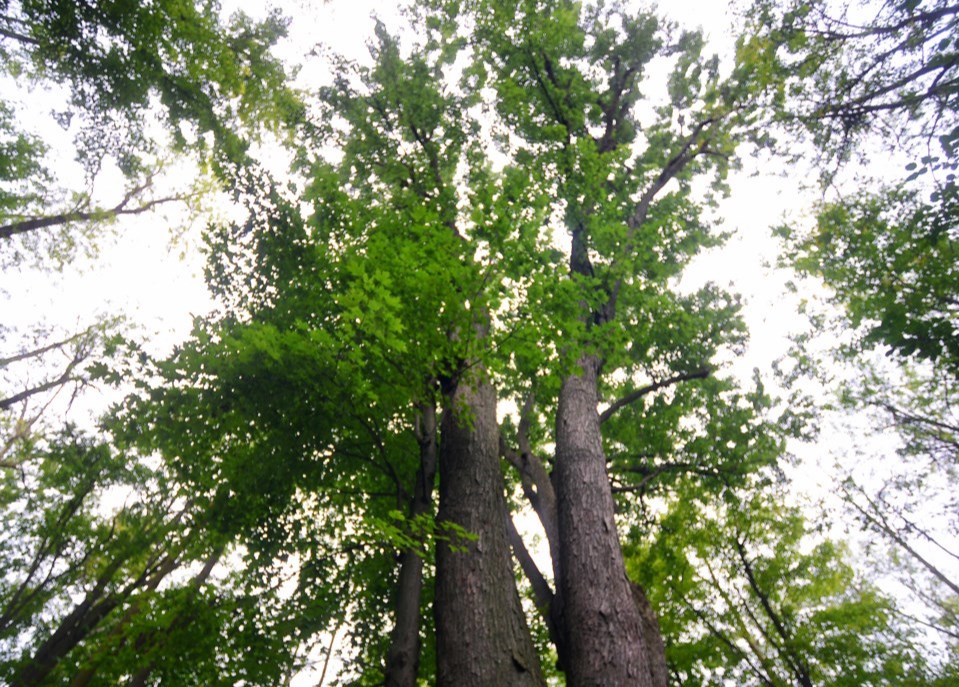One in four Canadian tree species is at risk, reveals a recent report from Wildlife Conservation Society Canada, including many found in Guelph.
The State of Canada's Trees report indicates that of the 57 tree species at risk in Canada, half are considered to be of concern in terms of global conservation.
Threats to trees include pests, diseases, climate change and land development, and are rapidly reshaping the diversity of tree species.
“For a country so closely identified with forests, this is alarming news,” says Dan Kraus who led the assessment for Wildlife Conservation Society Canada with data from NatureServe Canada and the International Union for Conservation of Nature Red List of Threatened Species.
“Trees are the foundation of forests and many other ecosystems, providing food, shelter and nesting or denning sites for wildlife. Losing the diversity of trees is devastating for the ecosystems and the species that depend on them. In less than one generation, we’re seeing the richness and diversity of Canada’s trees slipping away.”
A local issue continues to be the decline of the white ash tree because of the emerald ash borer.
“This is a big issue. Everyone has seen it. The city is in the process of taking many trees down where they might pose a safety hazard to humans,” said Sue Rietschin from Guelph Urban Forest Friends (GUFF).
The emerald ash borer is an insect native to eastern Asia that attacks and kills most ash trees in an area within five years of its initial detection. It has killed over 100 million ash trees throughout eastern and mid-western North America since it was first discovered in 2002, threatening billions of trees.
The City of Guelph has developed the Emerald Ash Borer Plan and is actively removing ash trees infested and killed by the emerald ash borer.
“The city’s forestry department is trying to replant trees along walkways, for instance, along the walkway on the south shore of the river at Royal City Park. Quite a few were taken out. And where appropriate, there is replanting happening,” Rietschin said.
Another endangered species, Rietschin says, is the butternut tree.
“The butternut tree, which looks very much like the black walnut, has a fungus. The fungus, as the warm weather increases, will become more of a problem for other trees as well,” she said.
But, Rietschin says testing which tree species can be grown in Guelph can be challenging due to climate change.
“It’s complicated for the forestry department to think about what can be planted, and what in 50 years will thrive as the climate changes,” Rietschin said.
“For example, even our sugar maple trees, in order for them to thrive they need a covering of snow over their roots in the winter. And that might become more difficult as the temperature goes up. The syrup industries thrive here because these trees are in the right temperature and with the right amount of snow.”
Wildlife Conservation Society Canada says people can better protect Canada’s trees by:
- Identifying and recognizing the habitats of rare trees and supporting conservation and stewardship efforts in these places including through the Key Biodiversity Areas program.
- Replanting a wide variety of native species can help rebuild beneficial tree cover everywhere from urban centres to farms.
- Supporting the collection of genetic material from trees that are more resistant to pests and pathogens. This can set the stage for reintroduction of tree species that are currently being lost.
- Thinking of ways to help trees adapt to climate change, including planting species outside their existing ranges and protecting climate refugia areas.
Locally, ‘One Canopy’ is a strategy that aims to increase tree planting efforts across the community using a mix of public and private land to achieve 40 per cent canopy coverage in Guelph.
Guelph’s official plan requires doubling the current tree canopy in 10 years. In 2019, the city completed the Urban Forest Study that provided a detailed picture of Guelph’s entire urban forest including current conditions and opportunity for growth.
“If people are really concerned about the tree canopy, there are a couple of things coming up this spring where homeowners will be able to get a tree, and can get help in choosing the right tree for their back or side yards,” Rietschin said.
“It does have to be the right tree in the right place. You don’t want a tree that is too big, or too small. It really does have to be just right.”
There are a variety of tree planting initiatives in the works for spring including a tree planting program, a joint effort between the city and Trees for Guelph.
REEP Green Solutions also offers local tree planting options.
“If people don’t have back yards, there’s lots of tree planting going on this year. A big one coming up is on Earth Day on April 22, with the planting of a new forest in the south end near Clair Rd. and Trees for Guelph is leading that. It is a great organization for planting,” Rietschin said.
“This will be a big event on that day.”



